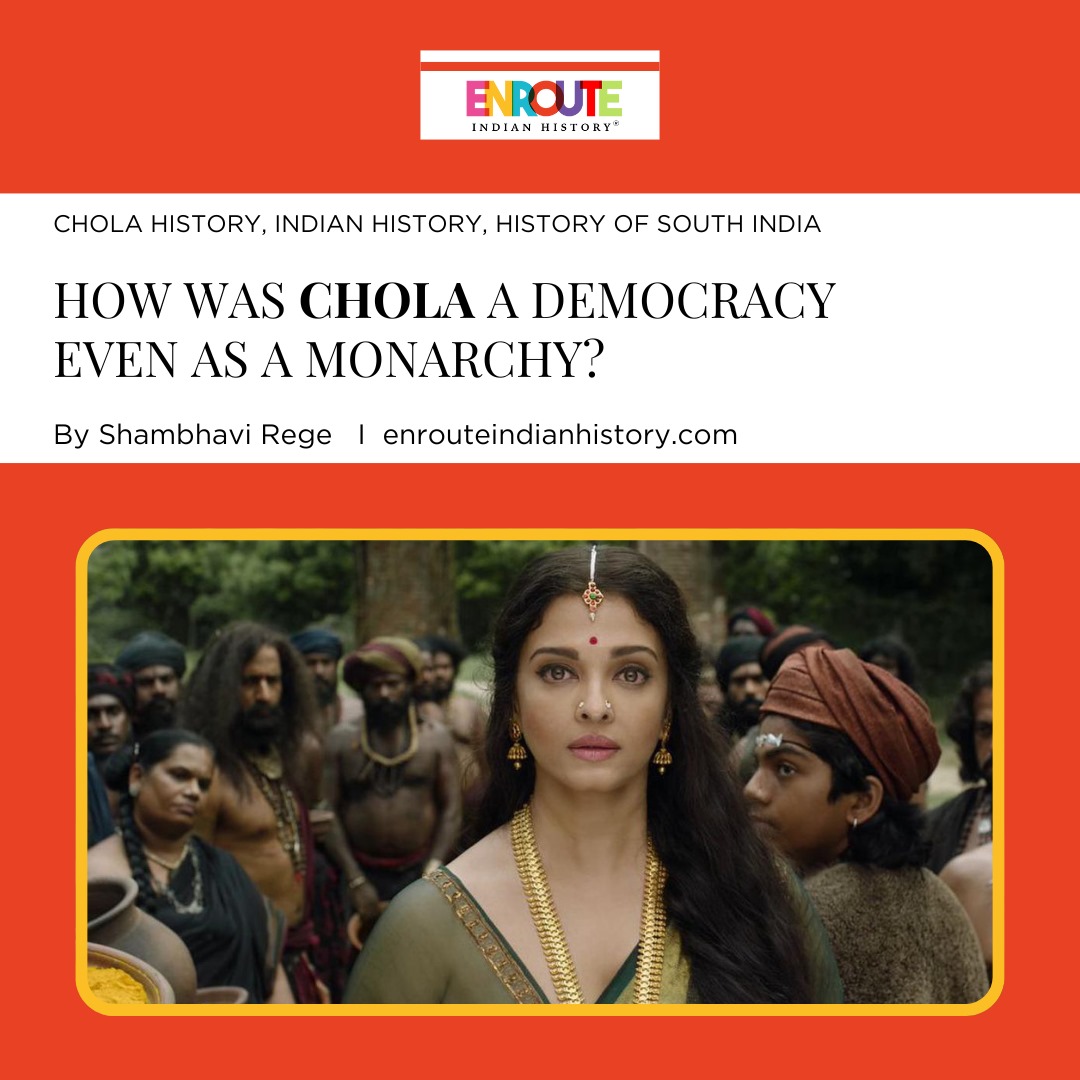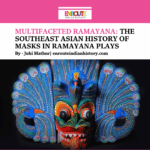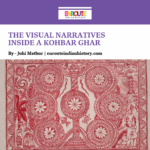
The Chola dynasty occupies an integral place in not only the history of South India but Indian history as well. Along with the Pandyas, Pallavas and Cheras, the Cholas were an important dynasty that ruled south India. Chola history is adorned with the development in the socio-religious spheres and the large temple-building activities. Rulers such as Parantaka I, Raja Raja Chola and Rajendra Chola took the Chola empire to great heights through expansion and also consolidated power. They took part in large construction activities that not only benefited the structure of the towns but also the social fabric of the society. Temples such as Brihadeshwara temple at Thanjavur stand as the witnesses to Chola supremacy and their patronage towards temples. Though the Chola empire stands as the period of prosperity for the architecture and art in the region, it also witnessed the administrative prowess of the Cholas. Today, as much as the Cholas are remembered for their art, their administrative system and the elections system are also studied and praised.

Extent of Chola empire
(Source- Civils Daily, 2022)
Chola history
Cholas were one of the longest reigning dynasties in Indian history, with records dating back to the 3rd century BCE, and flourished till the 13th century. The land south of Tungabhadra was united and held as one state for two centuries or more. The foundation of this mighty empire in the history of South India was laid by Vijayalaya, a descendant of the early Cholas. The first capital of Cholas was at Uraiyar and then shifted to Thanjavur. The imperial Cholas had numerous warriors who wore the Chola crown such as Parantaka Chola, Rajaditya Chola, Gandaraditya, Sundara Chola Parantaka II, Madurantaka Uttam Chola, Adita I, Raja Raja Chola and Rajendra Chola. Parantaka Chola waged war against the Rashtrakutas and extended the Chola empire. Gandaraditya was known for his socio-religious activities. Sundara Chola alias Paranataka II, was the most illustrious Chola ruler. His elder son Adita I killed Vira Pandya.

Raja Raja Chola
(Source- India Today, 2022)
After Sundara Chola his cousin Uttam Chola became the king as Adita I was murdered. The line of power was passed back to Sundara Chola’s family after his younger son Arumolivarman became the king. He was termed as Raja Raja Chola and he expanded the Chola empire beyond Kaveri and Tungabhadra. Chola history is incomplete without his mention. His son Rajendra Chola was the worthy son of his father and proved his mettle against the Pandyas and Rashtrakutas. He extended the Chola rule up to Ceylon and Maldives. Cholas not only expanded their empire but also played an important role in the socio religious history of South India. They were passionate about architecture and sculptures. The lost wax technique was a speciality of the Chola period.
Monarchy under Cholas
King was the highest authority in the Chola empire. The king issued royal orders that were in oral form and recorded by the private secretary. These orders were confirmed by the chief secretary termed as Olainayakam. These royal orders were then sent to the concerned officials. Many of these orders were turned into inscriptions. As the Cholas were a hereditary monarchy, the eldest son of the king became the next ruler. The king appointed a Yuvraja (male successor). Kings in Chola history often took titles such as Chakaravartigal or Tribhuvanachakravarti. Despite being a monarchy the Chola empire had a strong administration. The administration in Chola history mirrors the present-day structures of democratic countries.

Brihadeshwara temple at Thanjavur
(Source – Liturigical temples)
Administration of Cholas
River Kaveri plays an important role in the history of South India. It witnessed the rise, flourish and decline of many kingdoms. It runs southeast through Karnataka and Tamil Nadu and merges into the Bay of Bengal. It was this land that the Cholas ruled for centuries. During the Chola period, the entire region was controlled by a single government for the first time. According to D.A. Smith, “the administration of the Chola kingdom was highly organized apparently from ancient times”. Administrative divisions existed for better governance. There existed a central government with the king as its head. The kingdom was divided into provinces which were headed by governors. These provinces were termed Mandalams which were further divided into Kottams and Nadus(districts). It resembles the modern-day administrative division structure of state, district and talukas. Valanadus were a group of Nadus. This structure was further divided into Urs (villages).

Part of Uttaramerur inscription
(Source- IAS Toppers,2024)
Village administration under Cholas
Chola history has been largely known through their inscriptions. The Uttaramerur inscription of Parantaka I states the functioning of village administration. The composition of the council, eligibility to be a part of these councils, election procedures for the candidates and the limits of their power. The urs were self-sufficient and were headed by a village headman. Each village had a self-governing body which resembled the panchayat raj system. The villages had committees which were responsible for the irrigation, maintenance of roads and tanks and law and order. The members of these committees were not chosen but elected. Each village had wards termed Kudumbus. Each ward sent a representative to the village general assembly.
Elections system in Chola period
Kudavolai was the term used for the elections during the Chola period. It is a significant event from the history of south India. It was an elaborate process that was employed to select the members for various committees such as the tank committee, temple committee, and garden committee. The elections were held every year and it had all the components of a modern democratic election process. The members who wished to contest the elections had to meet the qualifications criteria. There were a set of qualifications and disqualifications. For a member to be eligible to contest the election one had to be older than 30 years and not more than 70 years. The member needed to own land on which tax was paid. The member also had to own his house which was built on legally owned land. The member needed to have knowledge of Vedas and should be a person of good character. There were rules of disqualification also which were followed. Any member who committed sins such as stealing or adultery was disqualified. A person who killed a Brahmin or a woman or a cow or a child could not contest the election. Any member who met the qualification criteria was eligible to stand for the election.

The names of eligible candidates were written on separate palm leaves. These leaves were then put into a pot and it was shuffled. After this process was over, the temple priest or a young boy was asked to pick the leaves. A total of thirty leaves were picked. 12 members were elected to the annual committee, 12 members were elected to the garden committee and 6 members were elected to the tank committee. The tenure of each member was one year and once elected the members were not eligible to contest the elections again for the next three years. These elected villagers carried out the village administration and the committees that were formed, termed as Variyams also looked after the specific departments related to law and order, administration and irrigation.

The republic day tableau of Tamil Nadu showcasing the Kudavolai system
(Source- Tamil.oneindia.com, 2024)
In 2024 the Republic Day parade witnessed a part of the history of South India when the tableau of the Tamil Nadu state showcased the Chola elections system. The Kudavolai system was displayed, with the villagers voting on palm leaves put into big pots. A significant part of Indian history, the Cholas who had their home in the fertile lands of Kaveri, not only provided significant contributions to the political, socio-religious and economic conditions but also took part in the earliest democratic system of elections. Despite being a monarchy the Chola empire had an administration that stood on the foundation of democratic ideas. The Kudavolai system may as well have been termed as the draw system but it practised the nature of democracy where the members had to first qualify to rule. People gathered to watch the process, with wonder not knowing that they were witnessing a significant event in Indian history and the early homage to the democratic spirit of the country.
References
H.Salimani, Dr.Vijayakumar. “South Indian administration during Chola period.” International Journal of Scientific Research (2016): 533-535.
Mrs.M.Vanitha, Dr.Sthanislas and Dr.G.Jayasankar. “Local self government under the Chola dynasty.” International Journal of Creative research thoughts (2024): 779-783.
R.Marimuth. “The Panchayat system under the Chola studies from inscriptions.” Historical Research Letter (2015): 21-24.
Sastri, K.A.Nilakanta. A History of South India- From prehistoric times to the fall of Vijayanagar. Oxford University Press, 1975.
Sharma, Dr.Namita. “South Indian administration during Chola period.” International Journal of Education, Modern management, Applied science & Social science (2022): 39-42.
Singh, Upinder. A History of Ancient and Early Medieval India. Pearson , 2009.
https://iastoppers.com/articles/kudavolai-electoral-system
https://wonderthatwasindia.blogspot.com/2018/07/the-imperial-cholas-zenith-of-ancient.html



















